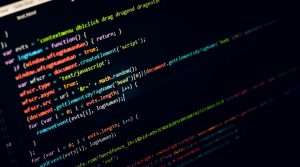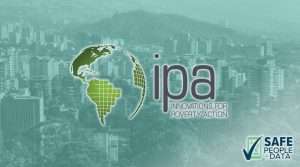- Last Updated: April 30, 2025
What is a data collection app?
You’ll hear the term “data collection platform,” “data collection tool” and “data collection app” in this space. A platform is the term for the overall software used to collect, analyze, and share data. Most data collection platforms have a companion app that allow enumerators or researchers to collect data in the field using mobile devices, like a smartphone or tablet. Some data collection apps are also standalone products.
Data collection apps or tools are applications that allow you to gather information, build forms, and create surveys to collect primary data. With these apps, you can use a variety of methods, including computer-assisted phone interviewing (CATI), in-person interviews, or self-administered surveys.
Some organizations get by with gathering data with a combination of pen and paper, Excel, and social media tools, like WhatsApp surveys. It’s not easy (or very secure, or efficient), but it works, and there are few upfront costs. But increasingly, data collection professionals and organizations are switching over to fully digital data collection processes.
Here are some of the advantages of digital data collection apps over paper forms:
- It’s more secure. Unlike a collection of paper forms, digital data collection allows you to have much more control over how data is collected, who it’s shared with, and whether it’s encrypted
- It’s easier to monitor data quality. Instead of waiting for your team to finish collecting data in the field, you can run quality checks automatically each day or each time a dataset is updated.
- It’s faster. Since data can be accessed and monitored daily, you don’t have to wait until the end of the data collection process to clean and access the data, like with pen-and-paper methods.
- Fewer errors occur. Mobile data collection systems don’t require someone to physically enter data into a system after it’s been collected, so there are fewer opportunities for errors. No data entry or survey scanning software required. And no printing!
- There are more field types options. When collecting data digitally, you can capture more information, like GPS location, photos, audio, video, or perform calculations.
- Enumerator training is easier. When you rely on enumerators to carry out pen-and-paper data collection, you depend on their knowledge of complex skip patterns, which means you have to offer lengthy training sessions. When you use an app, the software handles skip patterns, field validation, and any calculations.
As digital data collection apps grow in popularity, it’s important to know that not all apps are the same. Developing the best processes for your data collection needs means taking the time to understand which app works best for your team, your project, and your specific data collection requirements.
In this article, we’ll look at the top tools that can be used for collecting primary data and give recommendations for which ones are best suited to your projects.
What to consider when evaluating an app for data collection

There’s a seemingly infinite number of data collection apps available at the moment. That’s great news for you — you get to choose the data collection app that’s built specifically for your purpose, which will make your life easier. Let’s look at what to keep in mind before you start looking at specific apps for data collection.
What’s your research area?
Since data collection apps can be so specialized these days, it’s possible to find an app that specifically aligns with your research needs and specific field or industry.
Monitoring and evaluation, healthcare, and market research are examples of fields with data collection tools tailored to them. However, also keep in mind that tools tailored to very specific use cases may not necessarily have the same level of feature options and support available that more robust tools created for a wider audience might offer.
Consider the following:
- Think about what kind of primary data you need to collect: qualitative, quantitative, or both. The type of features you need may vary depending on the type of data you want.
- Do you primarily want to collect quantitative data? Then you should be able to use any survey application. Look for ones that let you customize form fields so you can ask for and validate specific information.
- If you require qualitative data, you will need something more robust than a standard survey application. If you plan to do long-form interviews to gather qualitative data, you will want to find a data collection tool that is designed to handle long-form, in-depth answers and offers features specific to qualitative interviews, like video interviewing options.
What’s your survey mode?
There are many modes you can choose for your surveys, and which ones you’re using affect which data collection app will be your best fit. Here are some options:
- Online surveys: Do you need the ability to share a link for respondents to fill out online via a web browser?
- Offline surveys: Do you need functionality that allows respondents to answer questions, even if the area you’re working in doesn’t have an Internet connection? You’ll need this if you’re collecting data in remote areas or in areas with unreliable internet connectivity.
- Social media surveys: Will you be collecting data via social media, such as WhatsApp?
- Phone surveys (like computer-assisted telephone interviews): Will your data collection app need to provide functionality for calling respondents and interviewing them over the phone?
- High-volume surveys: Who will you be sampling? How many respondents do you want to survey? Some apps handle large amounts of data better than others, or integrate with tools that make it easy to process high volumes. There are different considerations for apps when thinking about a survey with 10,000 responses, vs. a survey with 100,000+ responses.
Are you collecting data once, or following a population over time?
Are you conducting a cross-sectional or longitudinal study?
- Cross sectional data collection is when you sample a population at a specific point in time. Generally, these are less complex questionnaires that might not need as robust of an app for data collection.
- Longitudinal data collection is when you sample the same population at multiple points in time. For longitudinal data collection, you need a way to collect, access, and update data as you follow entities over time. A good solution here is an entity-based data collection feature like case management which allows you to organize your data collection around cases (individual respondents, clinics, schools, or whatever else you are measuring) instead of around questionnaires.
How sensitive is your data?
Consider how sensitive your data is. Different data collection apps have different levels of security features available, and many allow you to customize settings to keep data secure. Think about questions like:
- Who needs access to your data? Can all data be seen by all collaborators? Consider whether you want to customize permissions for different levels of access.
- Do you need to encrypt data? Encryption is a process that makes data unreadable to everyone except those who have a computer-generated key. It can be important to encrypt data when you transfer it from a device to a server to a computer and to a final storage location.
- What kinds of security requirements does your organization require? If you work for an NGO, medical facility, university or government agency, you may have strict security regulations that any data collection tool you use must comply with.
- Anonymous surveys: Do you need to completely protect the identity of your respondent? You’ll need an app that can keep track of responses through means other than names, such as unique identifiers.
What should your budget be for a data collection app:
You’ll want to choose a data collection app that fits your current budget, but ideally the app you choose can grow and evolve with your project.
Here’s an idea of what you can expect to pay for your data collection method:
- Free data collection apps: There are many data collection apps available that are free of charge. However, these apps usually provide minimal training opportunities and slower IT support than a paid app. More robust free apps will require you to have some questionnaire programming knowledge in order to use them effectively. Other free apps are easy to use, but won’t offer the feature options of a more powerful app.
- Mid-range and above data collection apps: Anywhere from $50 to $300 a month for basic plans, and $500 or more per month for larger teams, advanced features, large volumes of submissions, and enterprise subscriptions
- External consultants: $50,000+ per year, but they take care of data collection for you.
Be sure to consider the total cost of ownership when making a budget-based decision. For example, many open-source data collection apps are free of monthly charges, but in order to access the expertise required to customize it for their needs, teams end up needing to hire expensive consultants.
Learn more: Why open-source data collection tools can cost you.
When to choose a mobile app to collect data

Mobile data collection apps are applications used to collect qualitative and quantitative data through a mobile application (usually a phone or tablet).
Such apps are especially necessary for certain modes of data collection like computer-assisted-personal interviewing (CAPI), computer-assisted-telephone-interviewing (CATI), and computer-assisted web interviewing (CAWI). Usually enumerators, or data collectors, use a mobile device in the field to collect data as they’re administering surveys, doing phone interviews, documenting observations, or tracking items.
If your data collection projects involve data collectors traveling to meet with respondents face-to-face for interviews, using mobile devices for computer-assisted personal interviewing (CAPI) is a natural fit. Or, if you conduct phone interviews in rural, remote areas in low-to-middle income countries, a mobile data collection app designed for this purpose is the ideal solution for your needs.
Mobile data collection apps are also the data collection tool of choice if you’re working in offline settings. With the right data collection tool that offers strong offline functionality, you can collect data and even carry out a variety of advanced workflows without internet connection. Data will be stored in-app on enumerator devices, and later synced to a server when online.
With the need for offline work in mind, it’s important to note that some mobile data collection applications always require an internet connection to operate, while others (like SurveyCTO) have offline capabilities that make it possible to collect data in a standardized way in remote locations.
Seven standout data collection apps

We’ve covered a lot to think about! Now, without further ado, here it is:
The top seven apps that collect data:
Tool | Designed for | Strengths |
Offline settings, measuring programs, rigorous research, and high-quality, secure data collection. | Data security, data quality features, reliable offline functionality, custom AI chatbot for problem-solving. | |
Simple, personal surveys with a small audience and low complexity. | Ability to create forms quickly and easily, especially for users already familiar with Google products. *Note: Google forms does not have an Android/iOS mobile app like the rest of the options listed here. | |
Large-scale, simple surveys for companies, especially marketing surveys. | Professional-looking, user-friendly, and easy to create and share at scale. | |
HIPAA-compliant data collection apps for healthcare. | Managing users, roles, and projects. Entity/case management | |
M&E and research | Open source technology, user-friendly interface and flexibility. | |
M&E and research | Open source technology, managing projects and forms across different projects. Flexible options for data encryption. | |
Field operations, audits, inspections | Industry-tailored, GIS and AI data collection capabilities. |
SurveyCTO Collect
SurveyCTO Collect is the Android and iOS-compatible data collection app used to collect data in over 165 countries. It’s especially useful if you’re collecting data in large volumes in remote locations without wifi. Built on Open Data Kit (ODK), SurveyCTO took the foundation of ODK and added features and improvements including hosting, documentation, support, security features, and more.
Researchers and monitoring & evaluation (M&E) professionals in the social sector use SurveyCTO data collection app for its ease of use, baked-in security best practices, and expert 24/7 support available to all paid users.
The ability to create data and manage cases through the case management feature is key for longitudinal data collection, and SurveyCTO recently added robust offline functionalities so you can update datasets and pre-load data even while in the field with no internet connection.
Pricing is flexible, letting you choose between monthly subscription options and custom Enterprise packages for larger organizations. SurveyCTO is great for you if you’re undergoing large research or need an M&E data collection tool that works offline. You’ll love this tool if you need a data collection app that’s both easy to use and has robust functionality and fine-grained security options.
Google Forms
Google forms is the free, easy-to-use tool related to its tech giant parent. It’s great for online data collection or simple, personal surveys to a small audience. You’ll need an internet connection to use the app, since your device must be connected
Because of its history with Google Sheets (Forms used to be a part of Google Sheets), this app integrates seamlessly with Google Sheets. It is free with a Google account.
Google Forms is great for you if you have a smaller budget, you’re creating for personal or very small-scale surveys, and you love Google and don’t want a new tool/platform. Your questions are simple and straightforward, and you always have an internet connection.
SurveyMonkey
SurveyMonkey, like Google Forms, is another entry-level data collection tool. It’s easy to use, many people have had experience with it, and it actually does have quite robust features for data collection.
SurveyMonkey integrates with virtually anything, including Salesforce, Mailchimp, and Hubspot.
SurveyMonkey is great for you if you need an easy-to-use tool for large surveys (especially marketing), and your company has a budget for surveys. If you want to take advantage of A/B testing and logic, and need simple but solid built-in analytics, SurveyMonkey could work well.
CommCare
CommCare is a platform that allows organizations to build their own data collection app for frontline workers. Like SurveyCTO, CommCare is a revenue-funded product (unlike free open source tools), which means it’s able to offer some features (like HIPAA-compliant security) that other open source tools can’t.
Pricing starts at $250 per month, although sharing cases offline is only available for the $500/month tier.
CommCare is great for you if: You’re in the healthcare industry and you need a custom, HIPPA-compliant app for frontline workers.
ODK Collect
Open Data Kit (ODK) is an open-source data collection platform. Open-source tools have no licensing or subscription costs, and have a network of developers contributing to the tool. The collaborative nature of open-source tools can be beneficial, because top professionals across the field can contribute to building and improving the platform.
Since ODK is open source, there’s only forum support available, and you’ll be responsible for your own hosting and customization. This is why it’s a great tool for organizations who already have their own tech-savvy team on board, or who work with consulting firms who handle hosting and personalization.
In ODK, it’s tricky to separate between “project spaces,” i.e. separating forms and materials by team or country, unless you have an Enterprise account. This can make it difficult to work on multiple projects for multiple clients (like if you’re a survey research firm, for example). The ODK Collect app doesn’t guarantee that data is always encrypted.
Despite these concerns, ODK is great for many purposes! It’s such a solid platform that we built SurveyCTO on top of ODK, and then added in additional features, support, and security.
ODK is free, if you self-host data on your own server. ODK Cloud, which includes server hosting and support, starts at $169/mo.
ODK is great for you if you’re a social sector organization with a smaller budget for tools, and you have a tech-savvy team or you partner with a survey consulting firm.
KoboCollect by KoboToolbox
KoboCollect is the app companion to KoboToolbox, a data collection and management tool by nonprofit Kobo. It’s targeted for people working in “challenging environments” like humanitarian crises. KoboToolbox is another open source platform, like ODK. Kobo is a nonprofit, and its development is funded by partners and the community. They offer a free subscription for nonprofits, as well as additional tiers of paid nonprofit subscriptions. If you are not a nonprofit, Kobo offers multiple paid monthly subscription options. They will also provide large private servers for bigger organizations at an additional cost.
In terms of security, KoboToolbox security is GDPR compliant. Like ODK, you can choose to encrypt forms. However, it doesn’t have more fine-grained security options, such as selective encryption.
Choose KoboCollect if you have a limited budget but work in humanitarian work and need a sophisticated tool for data collection. It has similar features to SurveyCTO and ODK, but is designed for lightweight, nimble data collection during emergencies. KoboCollect is best for sophisticated, technical teams, since you’ll handle hosting on your own, and support is forum-only.
Fulcrum
Fulcrum is designed for field data collection and process management.
It utilized tools like GIS and AI to make a range of workflows from site inspections to audits for telecommunications, engineering, manufacturing, and more.
Choose Fulcrum if you work in a specific industry that requires in-person, on-site inspection, auditing, or similar workflows in a relevant industry.
The bottom line: When choosing an app for data collection, know what you need!
If we could sum up our advice in one quick phrase, it would be
this:
A tool that works well for a different researcher or organization might not be the best one for you.
We’ve covered seven great apps that collect data, but there are more options available. So how to make a final decision?
It’s actually quite simple: The more suited your data collection app is to your exact use case, the better (and simpler) it will make your data collection work.
If you’re a researcher working on a small-scale project alone or with a small team, you might be able to get away with using a simple free tool like Google Forms. But if you do more complex work–for example, large-scale, longitudinal studies across thousands of entities in remote areas–you definitely want to look at apps built for your specific case.
If you work for a survey firm conducting research for clients and do different types of data collection projects, choose an app that offers many feature options and makes it easy to collaborate with outside stakeholders.
On the other hand, if you work mostly in a specific area like healthcare or agriculture, you’ll want to look for tools that have features designed with those industries in mind.
One thing Team SurveyCTO definitely can help with?
Figuring out if SurveyCTO can meet your research needs.
Simply request a demo or start a trial at the links below–or get in touch with our team at info@surveycto.com.




